Wondering which is the best vegan egg substitute for cake mixes? Whether you’re out of eggs, don’t eat eggs, or simply trying to cut back, there are quite a few easy ingredients you can use instead. Some substitutes for eggs work better than others when preparing box cakes and other baked goods.
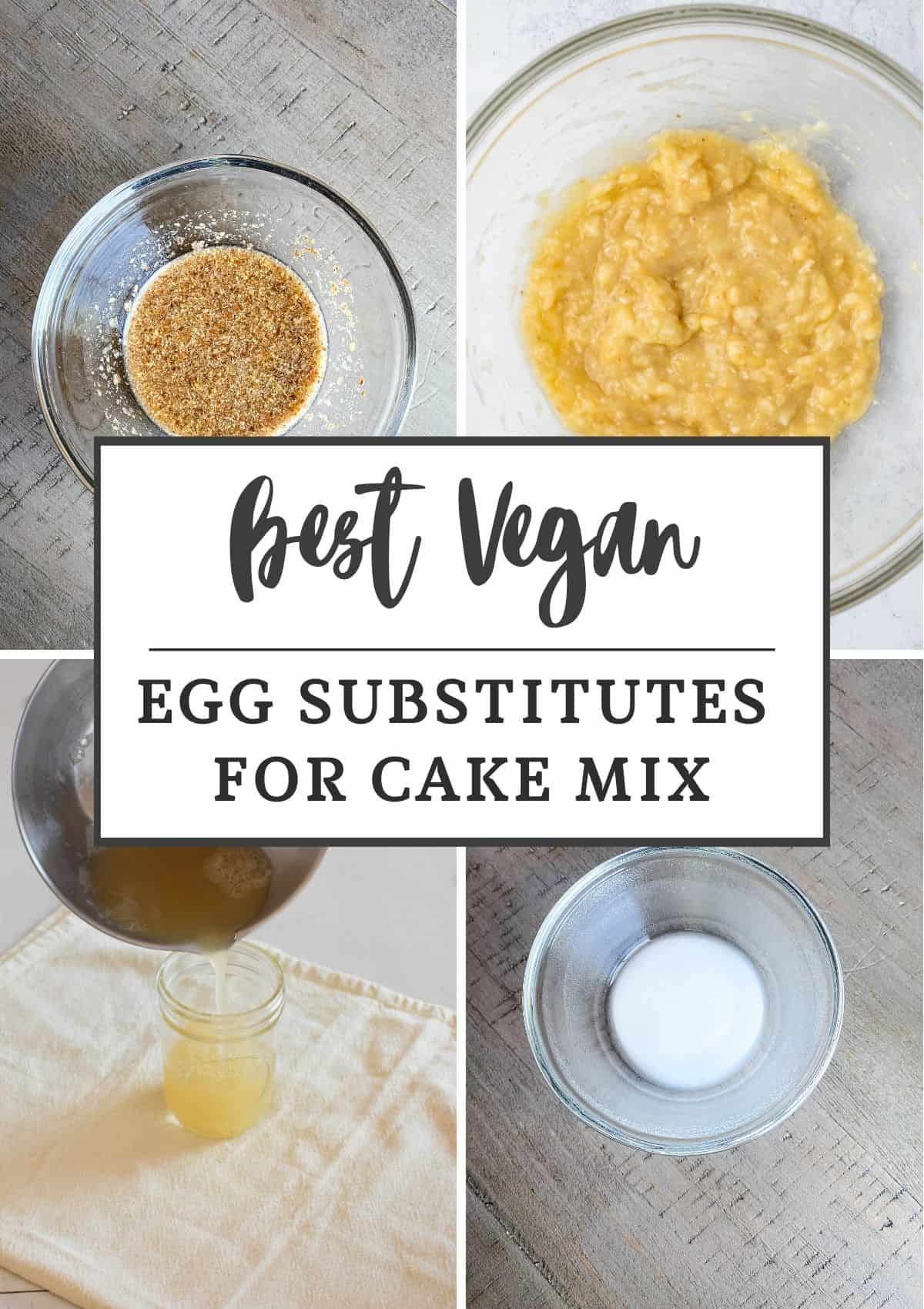
Jump to:
What do eggs do in cake mix?
The easy answer is that eggs are all about structure! But actually, it’s a little more involved than that simple statement.
All cakes need to have dry ingredients, a leavening ingredient, which is the thing that makes it rise, a fat such as oil or butter, and something to bind it all together.
The box of cake mix is the dry stuff with some leavening agent(s) already all mixed up for you. Most cake mixes require the addition of a fat and a binder which is usually eggs.
The binder is important because it holds all the other ingredients together and transforms them into a tasty baked treat. It’s the glue that gives the cake its structure.
But eggs do a little more than just that and play a role in
- the moisture in a cake.
- the texture, also called the crumb.
- how well the cake rises.
Different vegan egg substitutes in cake mixes will work a bit differently in each area which is why they each result in different outcomes. That’s why there is a bit of trial and error in the process.
After looking through the options you will need to consider based on what you are baking which one to try. But keep in mind, you may need to play around with a few to determine which one works best for you.
Why bake without eggs?
There are quite a few reasons to consider baking without eggs. Here are just a few:
- Egg allergy
- Following a vegan diet and want to make a vegan cake
- Trying to cut back on cholesterol
- Don’t have any eggs
Vegan egg substitutes to use in cake mixes
Here are the most popular vegan substitutes for eggs to use in baking. Each vegan option has its pros and cons and you definitely may need to experiment a bit with them to see which works best.
All are basic ingredients and easily accessible in most grocery stores.
HINT: One raw whole egg measures about ¼ cup when cracked open and the yolk and whites are whisked together. So for many substitutes, you will need a similar amount though that may vary in some cases.
1. Flax egg
A flax egg is made by mixing 1 tablespoon of ground flaxseed with 3 tablespoons of water. After letting it sit for five minutes, it thickens up into a consistency similar to raw egg.
It’s important to use ground flax and not the intact flax seeds.
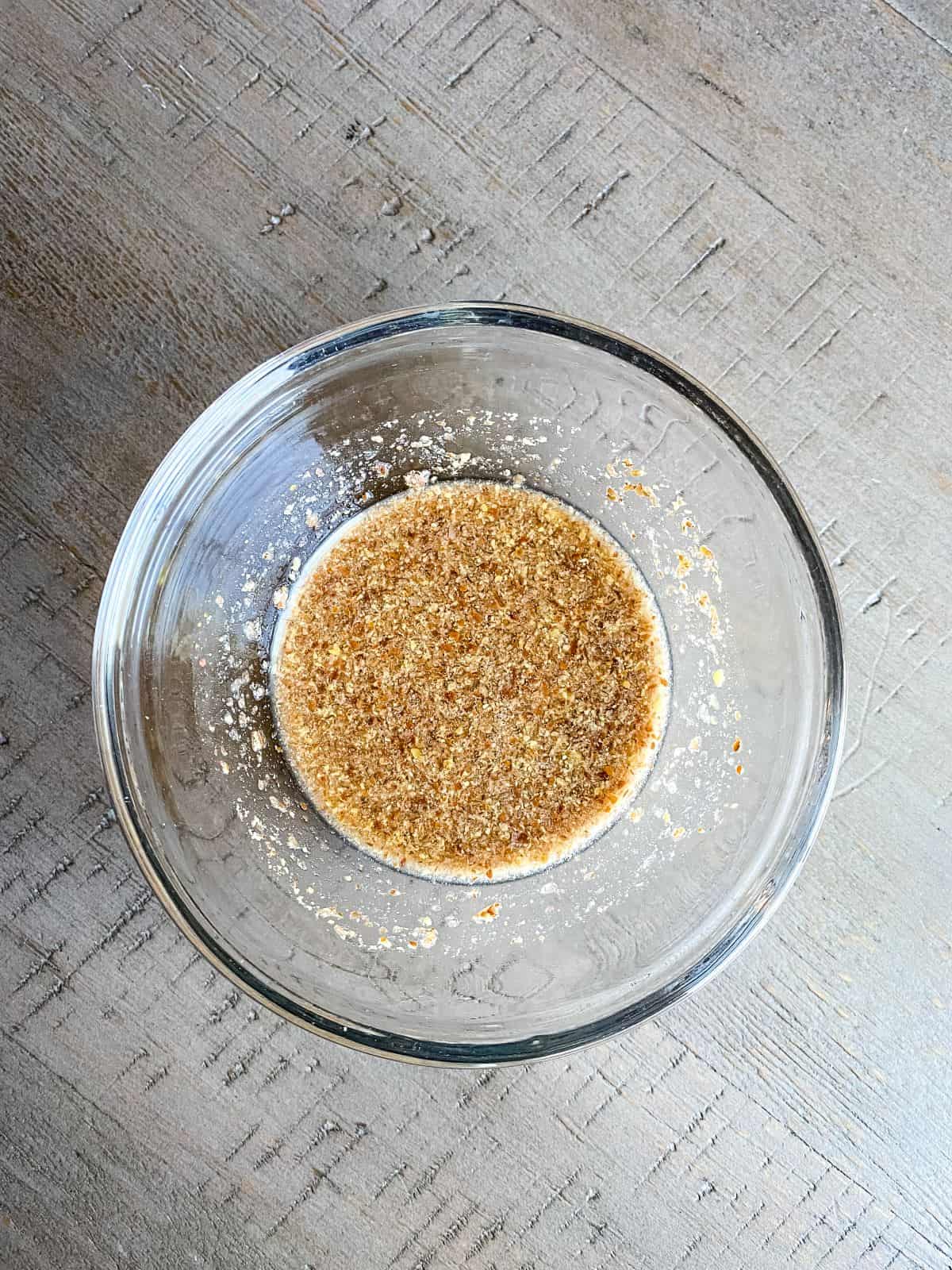
I find using flax eggs in baking works better with more dense and chewy preparations rather than light and fluffy cakes. You may find success with boxed brownies or cookies but when baking cakes, it can leave the cake feeling a bit heavy. It also provides good results in loaf cakes which tend to have a firmer texture.
Its color is another con as it may discolor lighter colored batters and cakes and create a coarse look similar to whole wheat bread.
You can see a flax egg in action check out my recipe for Vegan Chocolate Cupcakes.
2. Chia eggs
A chia egg works similarly to a flax egg. You make one by mixing 1 tablespoon of chia seeds with 3 tablespoons of water. In about five minutes it thickens up to a consistency similar to an egg white.
You can use chia seeds or chia powder as the powder is made by simply grinding up the seeds. The powder absorbs water more quickly than the chia seeds. If it seems thicker than an egg you can add some additional water to thin it out.
Chia seeds can also make baked goods a bit heavy just like the flax. It works as a great substitute in pancake mixes, baked loaf cakes, and muffin mixes and cookies.
3. Liquid aquafaba
Aquafaba is the liquid from a can of chickpeas or the cooking water left when chickpeas are cooked from scratch.
HINT: If you plan to use the liquid in baking you want to leave any seasonings and salt out of cooking the chickpeas and buy unsalted canned chickpeas. That way you don’t have anything adding an off flavor to your dessert.
If you are cooking your own chickpeas, store them in the liquid overnight and then drain the liquid off to use as aquafaba. This process thickens up the aquafaba and makes it more concentrated so it will function better as an egg substitute.
Three tablespoons of liquid aquafaba will whip up into a replacement for one egg. You can also use this as a replacement for egg whites by using two tablespoons of aquafaba.
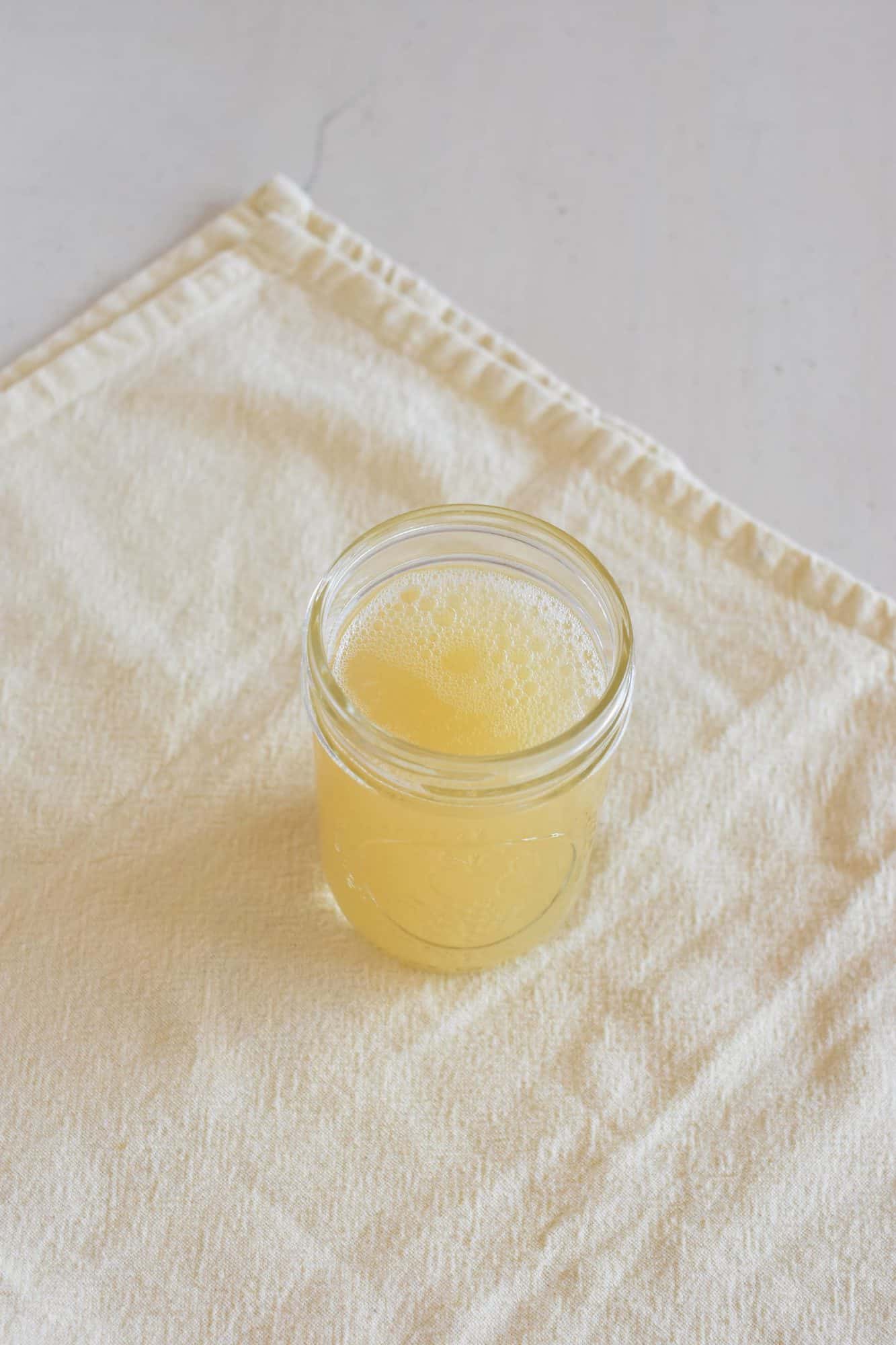
To use the aquafaba as an egg replacement for whole eggs, measure out the amount needed and gently whisk just like you would with an egg. This will incorporate some air into the mixture.
For cakes where a lighter texture is desired, use a hand mixer to beat the aquafaba for a couple of minutes before using it in the cake as directed.
One can of chickpeas produces about 1 cup of aquafaba and you can freeze any unused aquafaba to use in baking in the future.
Aquafaba brings a lot more flexibility since it works better in a larger variety of cakes from firm and dense to light and fluffy.
I successfully used aquafaba in this gluten-free red velvet cake mix which I topped with my vegan cream cheese frosting.
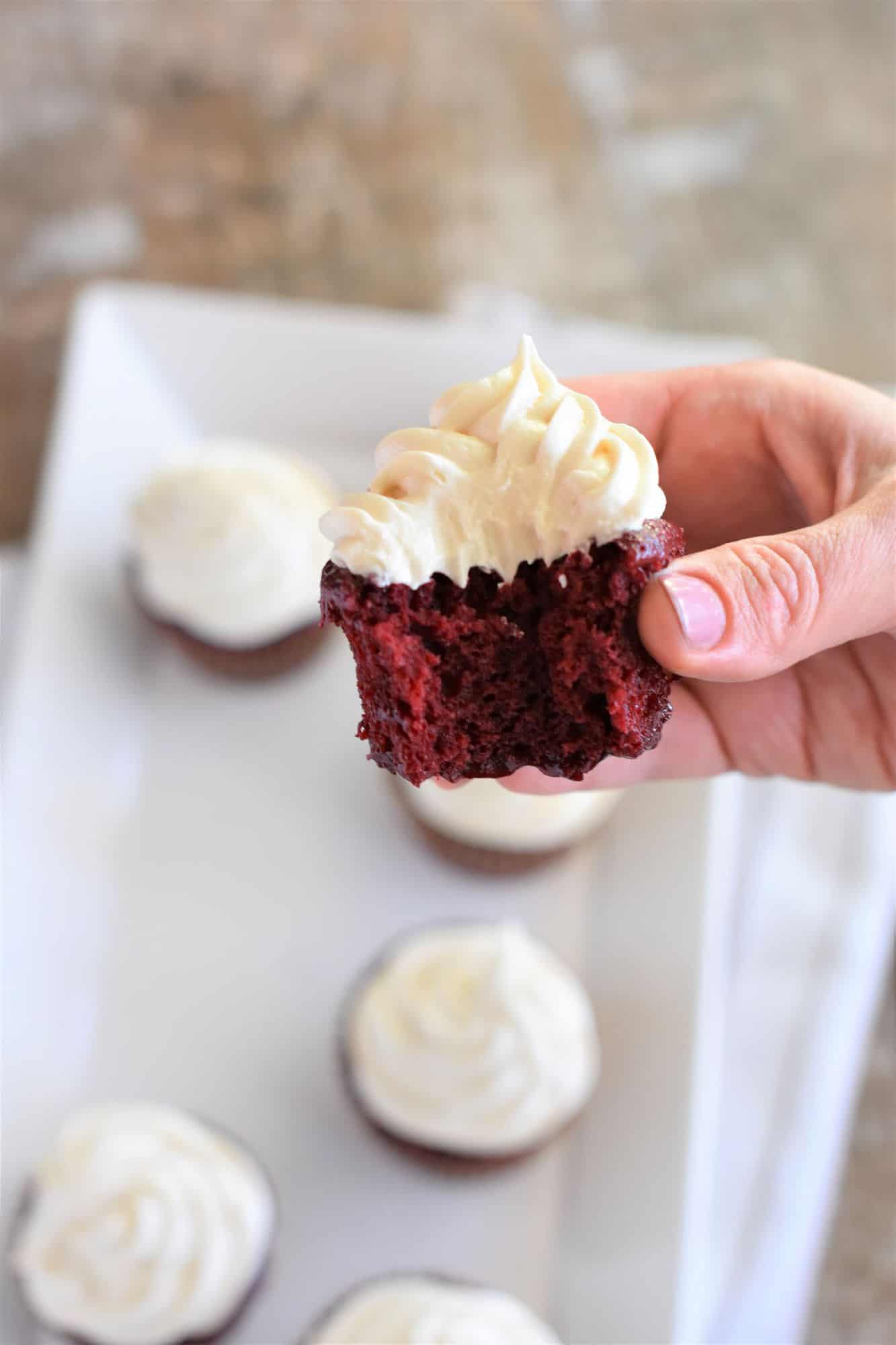
4. Applesauce
When it comes to using fruits and vegetables I find applesauce has the mildest flavor and is less likely to alter the color of a cake than other options.
While its flavor is mild, it does contribute a little taste so be sure it works well with the other ingredients in the cake or baked good.
Use a one-quarter cup of unsweetened applesauce to replace one egg. It works great in most preparations but can make cakes feel a bit denser.
If you want it to be a little bit lighter add ½ teaspoon of additional baking powder for each quarter cup of applesauce added.
These delicious vegan raspberry muffins are made using applesauce.
5. Mashed ripe banana
Mashed banana works almost the same as applesauce and one-quarter cup replaces one egg. The biggest downside to using banana is its stronger flavor which will be noticeable in most cakes so keep that in mind when using it as a substitute.
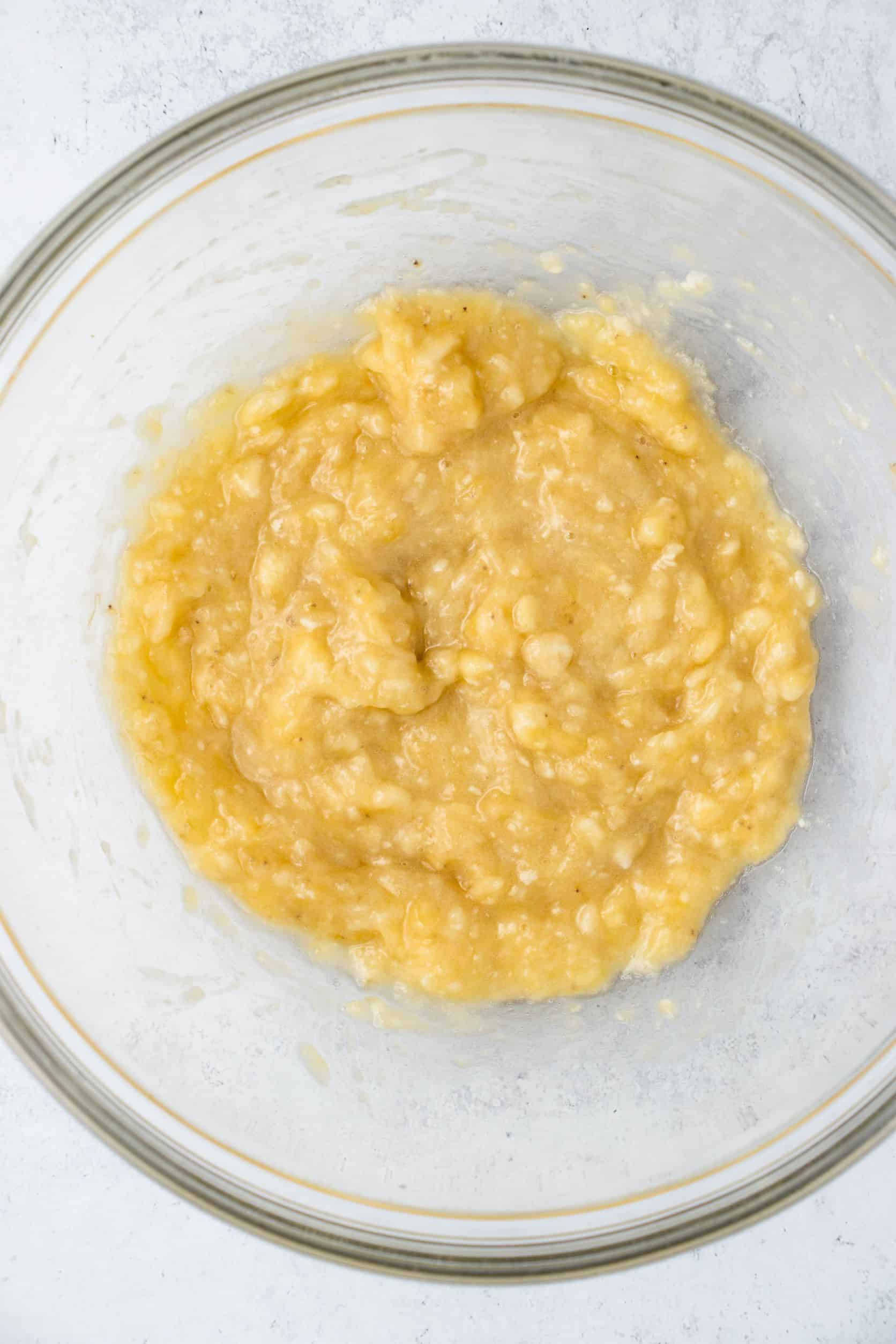
When using a banana and you want a lighter texture, add ½ teaspoon of baking powder for each egg replaced.
HINT: Be sure to start with ripe or even overripe bananas when using mashed banana as a substitute and that it is well mashed before adding it to the batter. I find it works best to do this in a food processor.
See them at work here in making super dense and rich banana brownies that everyone will simply love.
6. Vegetable purees
Zucchini, pumpkin, and carrots are all vegetables that work pureed or shredded and added as egg replacements. Use a one-quarter cup of the vegetable to replace one egg.
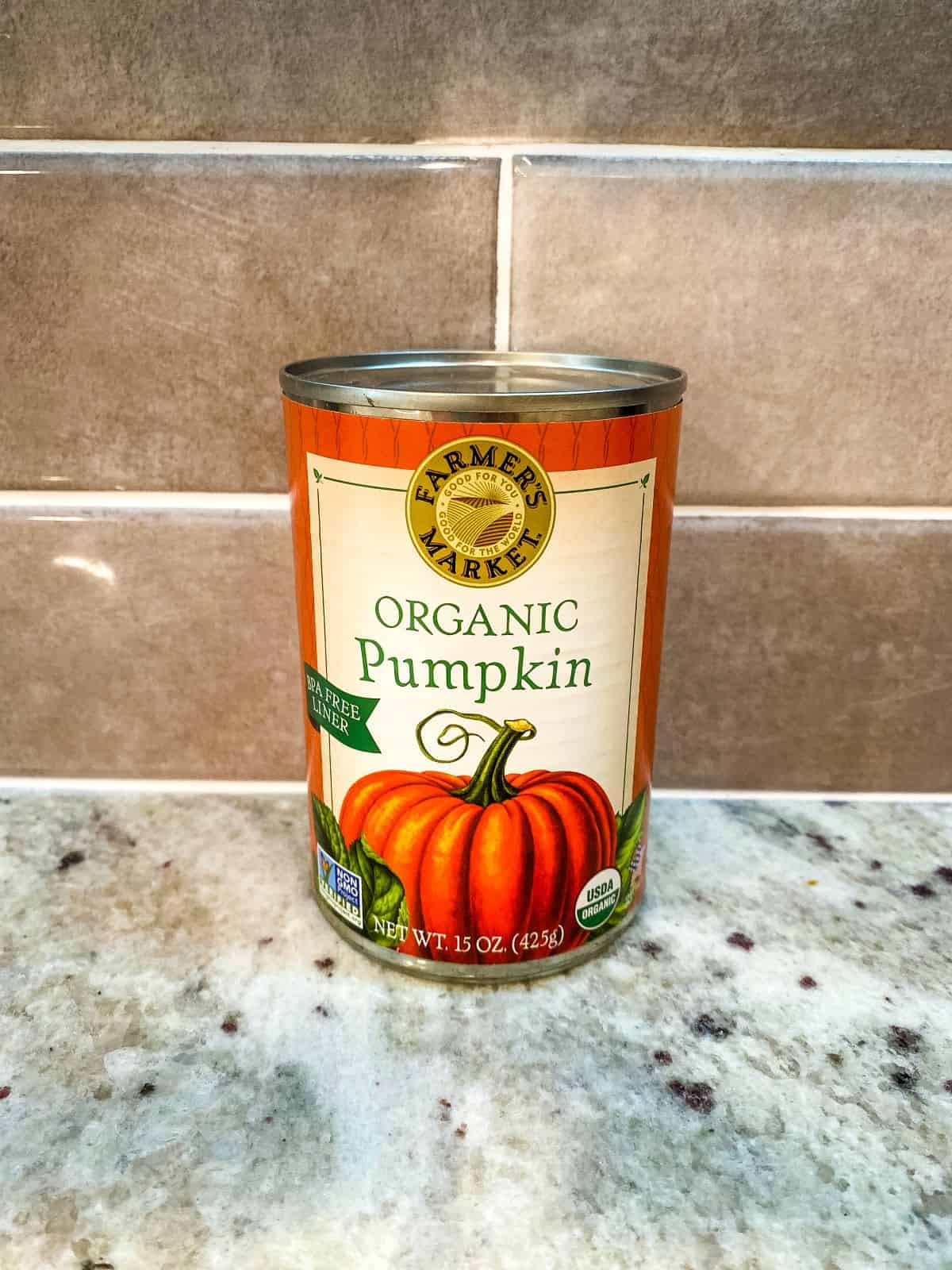
The biggest downside to using vegetables as an egg substitute is that they will add color and maybe even some texture to the baked good.
I find these work best in quick bread or loaf cakes, muffins, and more dense cakes. When working them, you can add more baking powder as mentioned above to lighten up the texture.
HINT: If your recipe is using one of these ingredients as a substitute for the oil you don’t need to add more. Simply add 1 tablespoon of water per egg in the recipe to add the missing moisture you’d get from the egg. In this manner, the puree will work as an egg and oil substitute.
7. Powdered egg replacer
There are several powdered egg replacers such as Bob's Red Mill or Ener-G Egg Replacer that you can use as a substitute in baking. There are other brands as well and each uses different ingredients to achieve the same thing.
These powders are generally mixed with water before adding to the cake batter. The advantage of using them is that they are shelf-stable and will last about a year when stored in a cool, dry place.
They also don’t have any flavor so they won’t affect the other flavors in your cake.
The downside is that since these substitutes are often made with starch ingredients, they may alter the texture and lead to a slightly dry cake.
I find it works better in quick breads and muffins that contain fruits and vegetables which add more moisture to the cake.
8. Vinegar and baking soda
This egg substitute in baking is my least favorite for a variety of reasons. To use this combination as an egg substitute, mix together 1 teaspoon of baking soda to 1 tablespoon of vinegar.
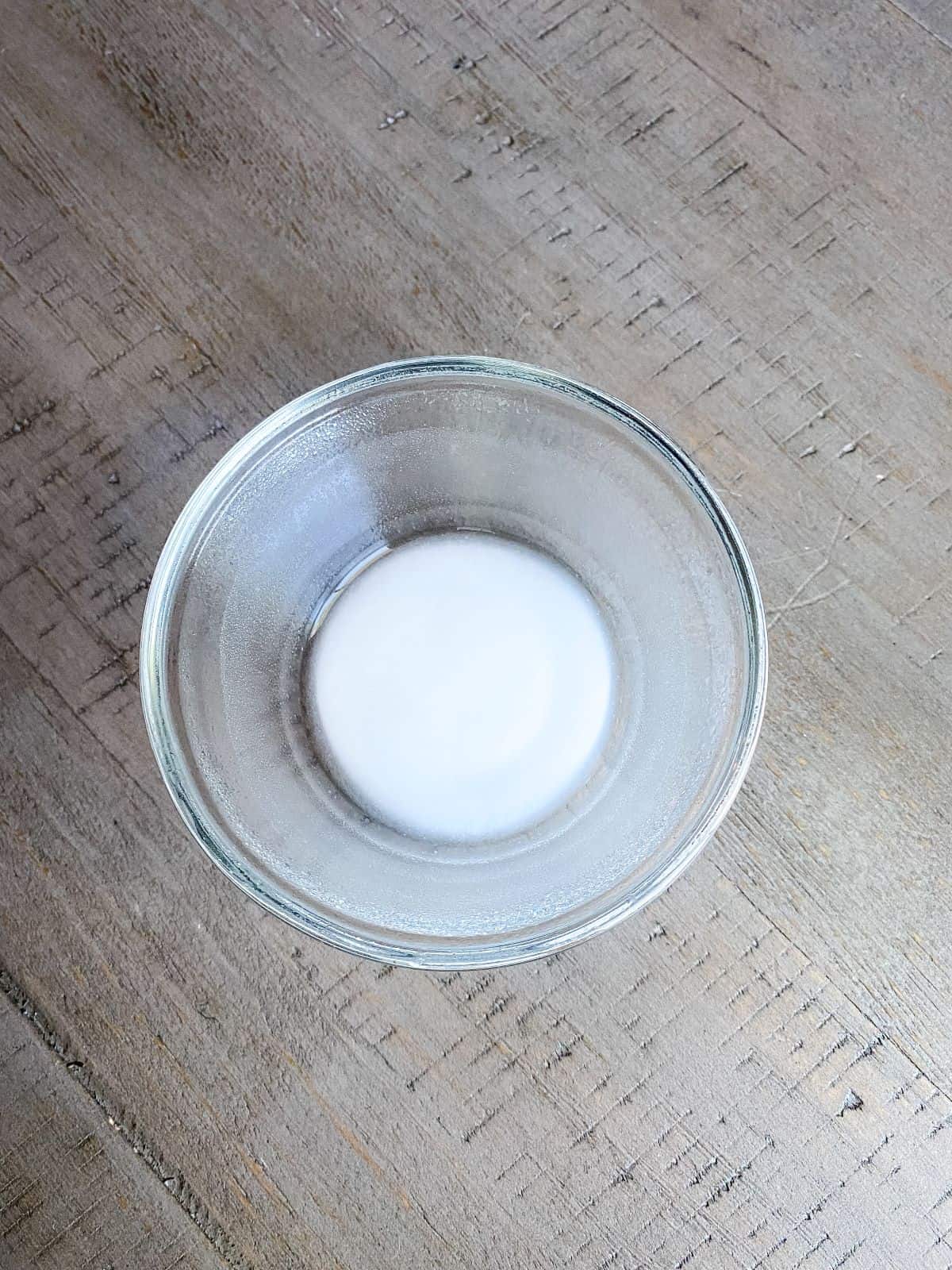
Once mixed it will bubble and start working right away means you need to move quickly. The best types of vinegar to use in baking are white vinegar and apple cider vinegar.
Be prepared to mix everything together and get the cake in the oven right away because if you wait too long this substitute won’t have the desired effect.
Another drawback is that too much baking soda can give baked goods a bit of an off-flavor when not used in the correct ratios.
I prefer to use this combination only for baked mixes such as cookies and bars that don’t need as much leavening and only use 1-2 eggs.
9. Silken tofu
Silken tofu is a soft and creamy type of tofu that you can puree into a smooth and creamy texture. One egg is equal to one-quarter cup of tofu.
HINT: It’s important to puree it until it is completely smooth either in a blender or food processor. That way you won’t end up with any chunks of tofu in your cake.
This type of tofu comes in different degrees of firmness from soft to extra firm. I recommend using the soft or medium in baking for best results.
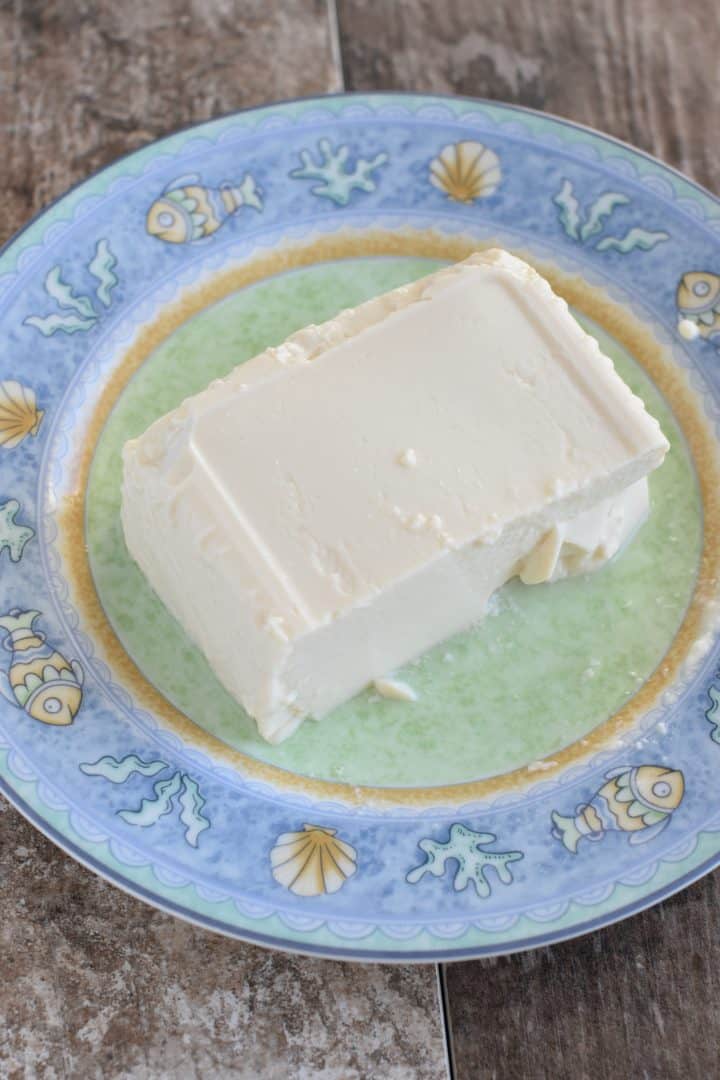
Tofu adds heaviness as well to desserts in the same manner as the fruits and vegetables. When using it in cakes, if it seems too dense try increasing the amount of baking powder the next time to see if you get better results.
10. Vegan buttermilk
Vegan buttermilk is made by mixing one teaspoon of vinegar into a one-quarter cup of plant milk. Soy milk tends to curdle better than other types of plant milk but you can use any of them.
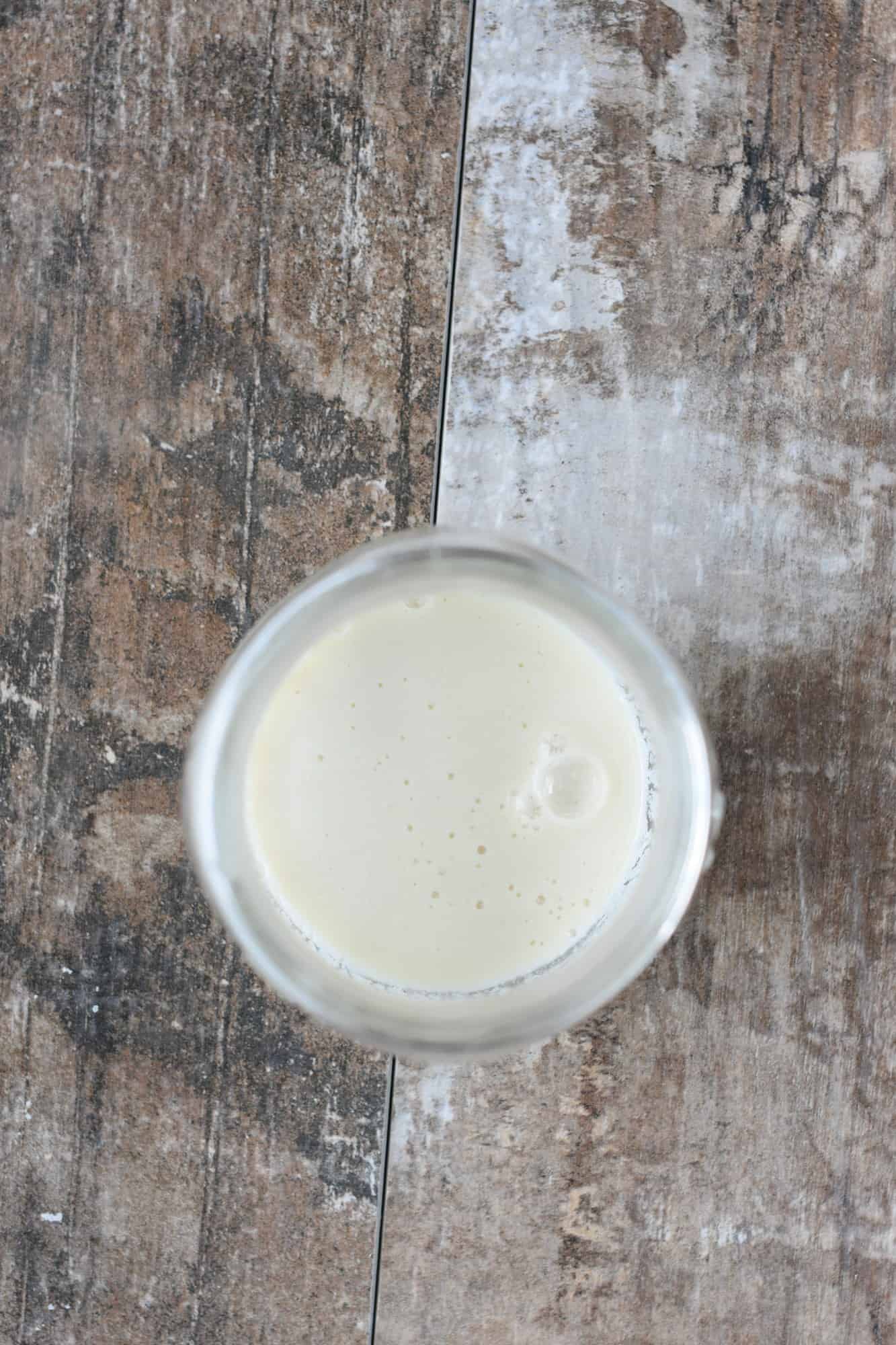
Your recipe will need baking soda for it to work as a leavening agent as the acid in the buttermilk works with the baking soda to leaven the baked goods.
11. Soy yogurt
Soy yogurt works to replace the moisture eggs provide in a baked good but likely won’t help it rise at all.
One-quarter cup of it replaces one egg. I’d recommend using this substitute to make cookies or brownies from box mixes but you may need to add an additional ½ teaspoon of baking powder to the mix per egg replaced.
Expert tips for vegan egg substitutes
- The number of eggs matters. Most vegan egg replacements work best when only replacing 1-2 eggs. In mixes or cakes that need 3 or more eggs, the eggs are also contributing flavor which none of these substitutes are able to do.
- The type of cake influences your choice. Use aquafaba and powdered egg replacer for baking lighter textured cakes. While heavier replacements are better suited to quick breads, loaf cakes, cookies, and bars.
- End results. Most of these egg substitutes result in a moist cake though the final product may not be as light and fluffy.
Frequently asked questions
If you are using a boxed cake mix, many of these substitutes are more likely to work than if you are making your own mix from scratch.
Making more than one substitute in a baked good is a bit more complicated especially when it comes to replacing the gluten. Now you are swapping two ingredients that contribute to the structure of a cake.
For best results, use a 1-to-1 flour replacement which is formulated to replace regular flour, though it may take some trial and error to see which works best.
While none of the replacements yield excellent results, the best egg substitutes for boxed cake mix are aquafaba, applesauce, and powdered egg replacers.
For lighter texture cakes, aquafaba works great though it really works well in most baked goods. Applesauce and flaxseed are my top choice for cookies, bars, and loaf cakes. I find they work well with the more dense textures of these desserts.
Egg yolks are super tricky because contribute to the flavor and color of baked goods. If you want to use a substitute you will need one tablespoon of any of the options to equal one egg yolk.
More vegan baking recipes
- Eggless Cake
- Vegan Almond Butter Cookies
- Vanilla Dairy-Free Cupcakes
- Vegan Chocolate Cupcakes
- Buckwheat Banana Bread
- Vegan Peanut Butter Oatmeal Cookies
There is no definitive answer as to which egg substitute in cake mixes is really the best. You will need to use a little bit of trial and error to find out which works best for you. You may find different substitutes work better for different types of mixes.
Just keep in mind that you may end up with a tasty cake or baked good but none of these substitutes are an exact replica of baking with eggs so the outcome may vary slightly.
©Watch Learn Eat. All content and images are copyright protected, and are not to be used or republished without prior permission.





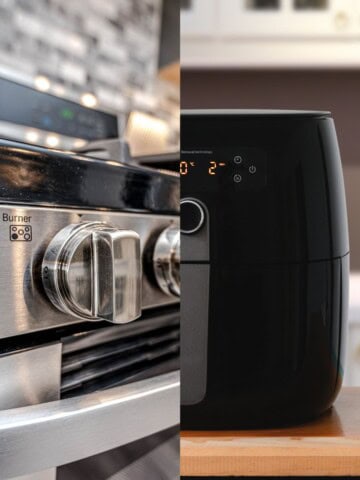
Leave a Reply